Mailchimp Setup
How to setup Mailchimp for use in OneSignal Email Messaging
OneSignal's Email Messaging requires the use of a third-party email service provider to handle email delivery. All you have to do is set up the integration between the provider and OneSignal, and you'll be ready to send emails through OneSignal.
Step 1. Requirements
- Mailchimp Account
- Add Mailchimp (formerly Mandrill) Transactional Email Plan.
- OneSignal Account
- A domain you own and DNS provider.
Don't have a Domain, DNS Provider or Email Service Provider?
No problem! Contact OneSignal's Sales Team and ask about Email Onboarding.
Mailchimp Testing
When testing Mailchimp without one of their paid plans, you can only send to email addresses that are from the verified domain.
Step 2. Configure your domain for email
Navigate to the Mailchimp Transactional Email tool (formerly Mandrill) Settings > Domains > Sending Domains and add your domain if you have not done so already.

When your domain is added, click View DKIM/SPF Setup Instructions, which provides the appropriate DNS settings you will need to update your domain. You can also verify your domain by clicking View details and receiving an email to your domain.

Next, you will need to update your DNS records for your domain host. Follow Mailchimp's instructions to learn more.
Once you have set up your DNS records, it make take up to 48 hours to work. Mailchimp will email you when your domain is verified.
Step 3. Create API Key
In Mailchimp's Transactional Email Tool (formerly Mandrill), click Settings and + New API Key.
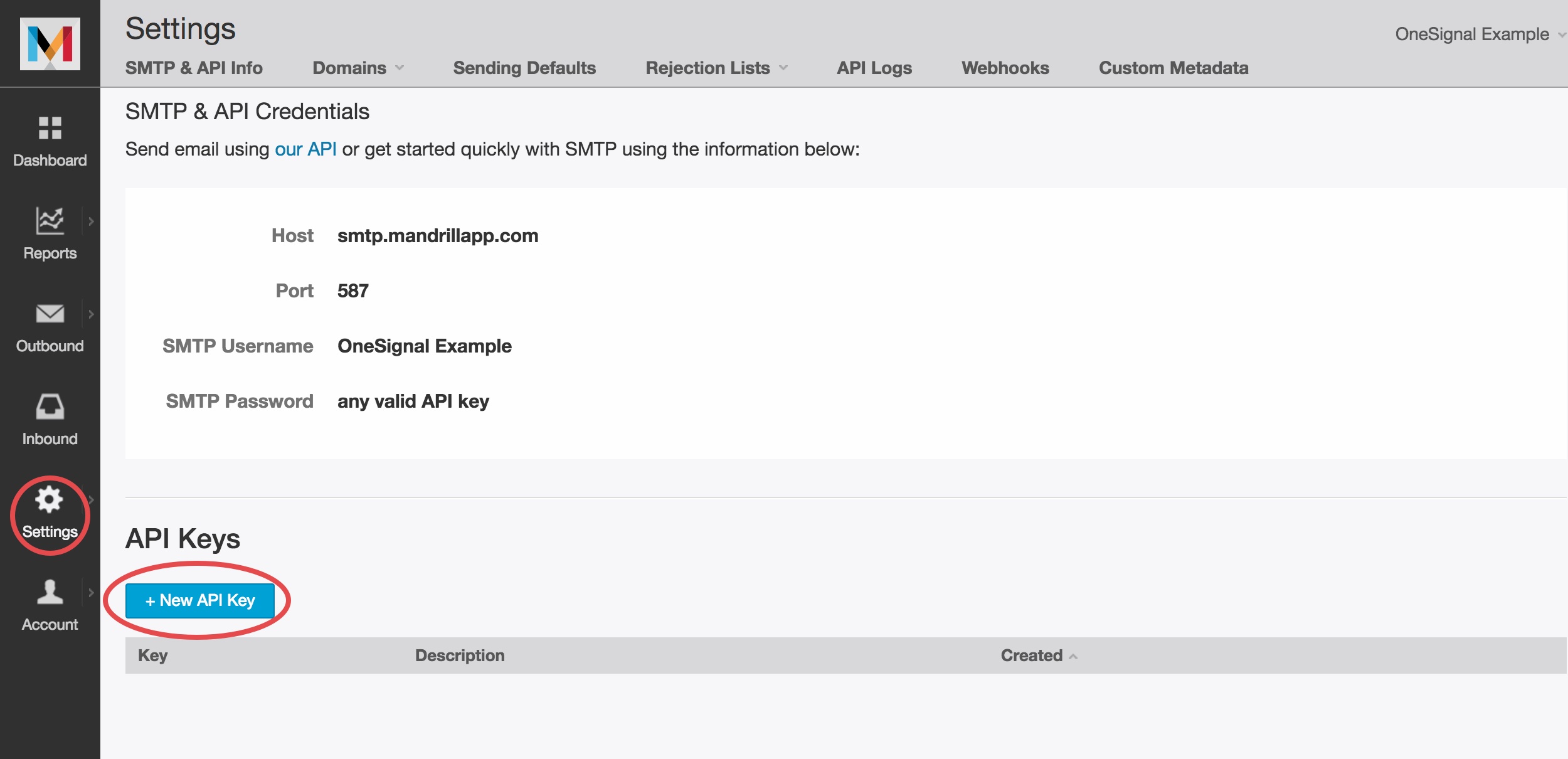
Optional: Name your API key something like OneSignal API Key.
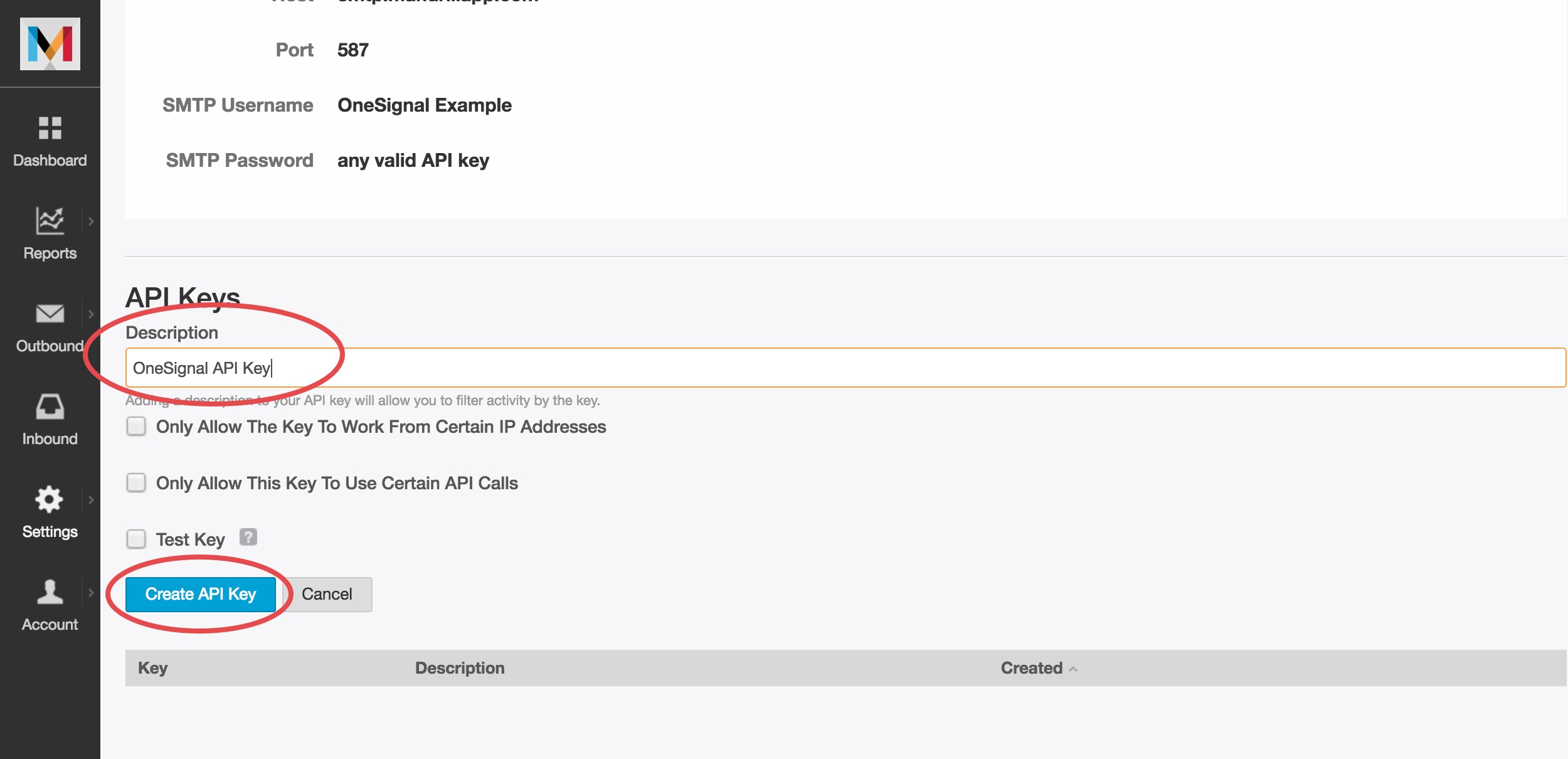
You will see your key was created successfully. Next, highlight the API key and copy it to your clipboard. Also note your SMTP Username here.
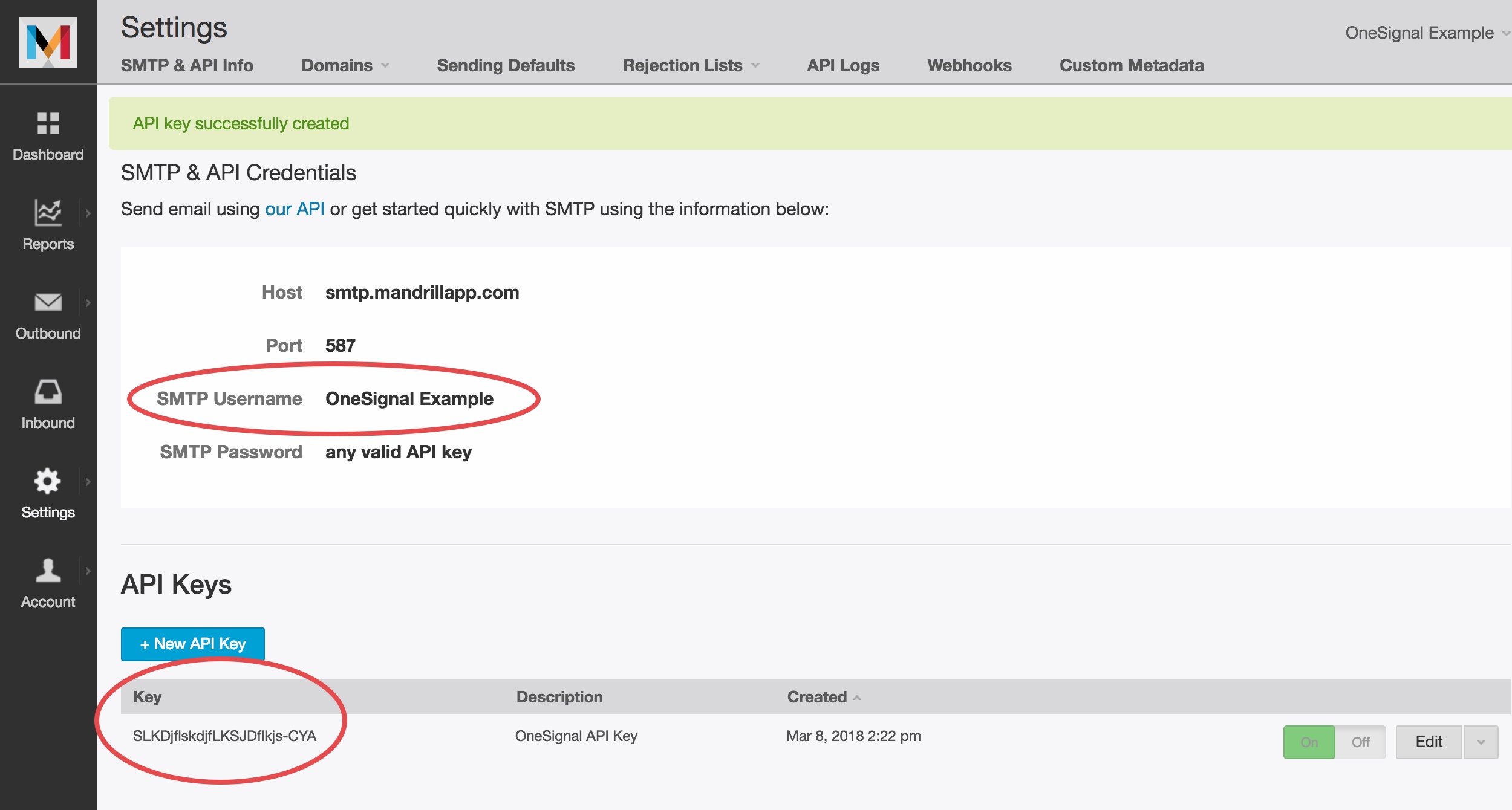
CAUTION! API Keys need to be secret
Your Mailchimp API Key is like a password. Keep it safe and do not share it.
Which API Key Permissions do I need to enable?
Since our API does a lot of communication between both platforms, you will likely need these permissions at the least:
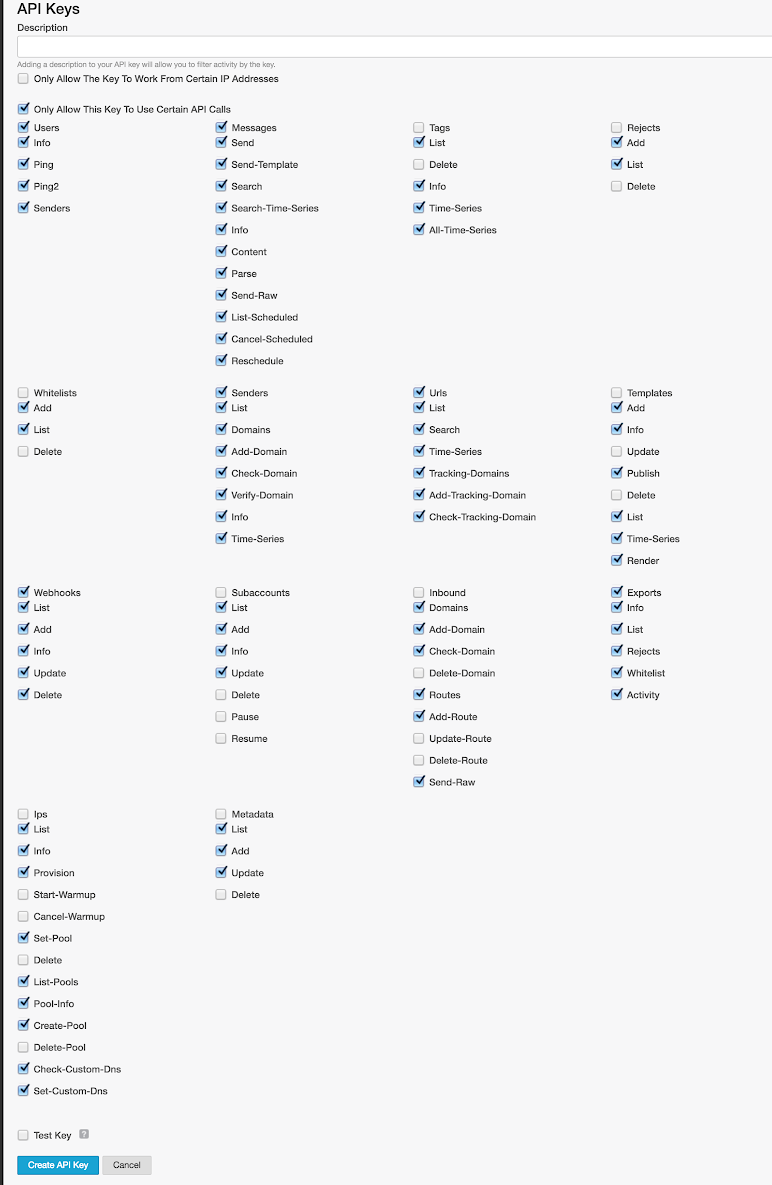
Step 4. Enable Email Messaging
In OneSignal, go to Settings > Platforms > Email

Select Mailchimp as the provider, and paste in the API key and SMTP Username.
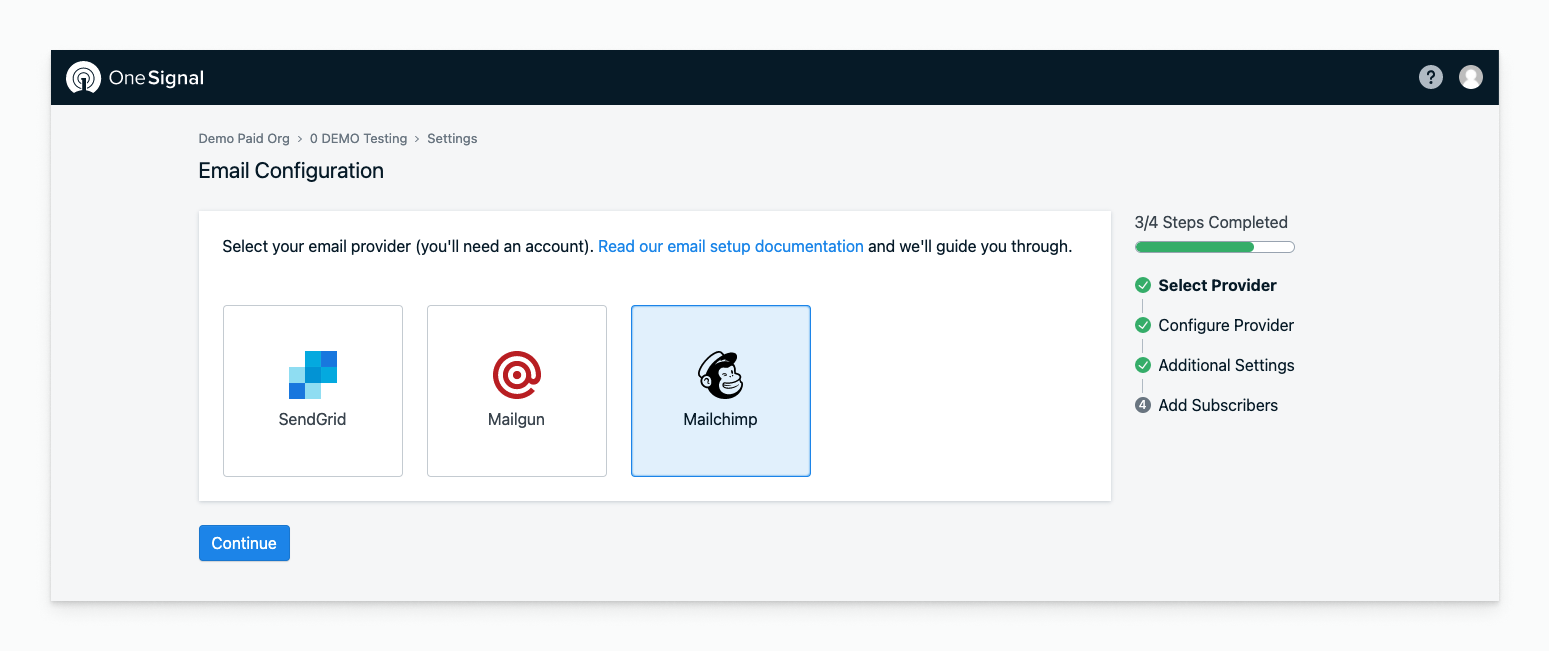
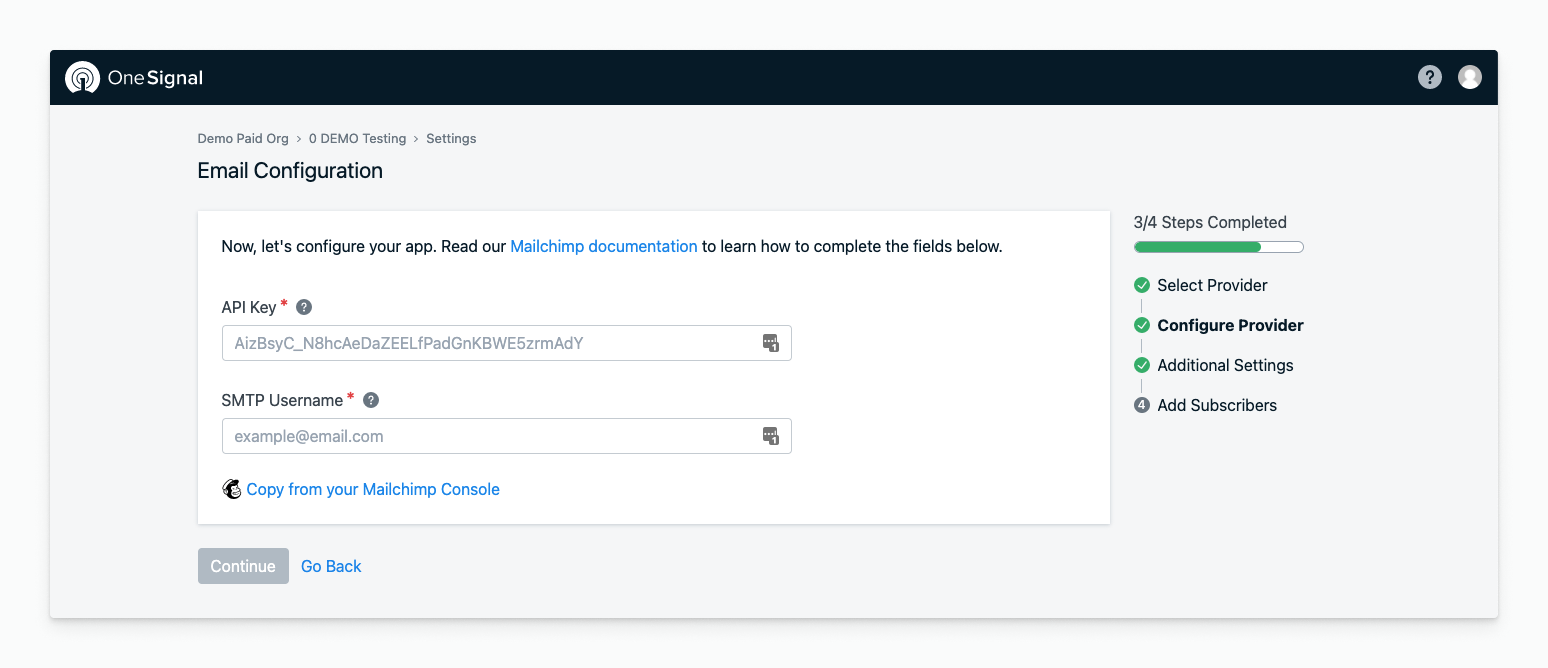
Delivery Defaults
Add the default name and email address you want your emails to come from (these can be changed later).
Press Done when finished.
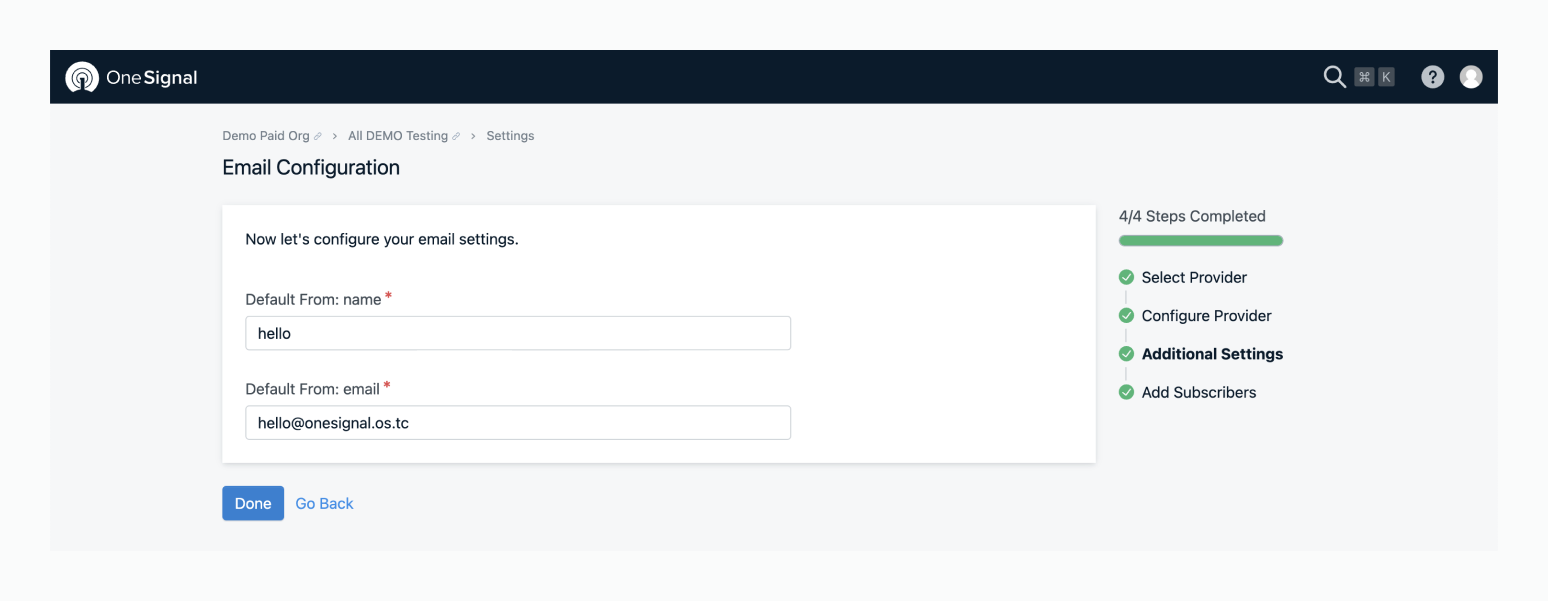
Step 5. Add Subscribers
If you have a list of emails ready, select Upload CSV to Import Email Addresses. You can always do this again later.
If you have a website and want to prompt users to provide their email. Select Add Web Prompt to use OneSignal's Email Web Prompt.
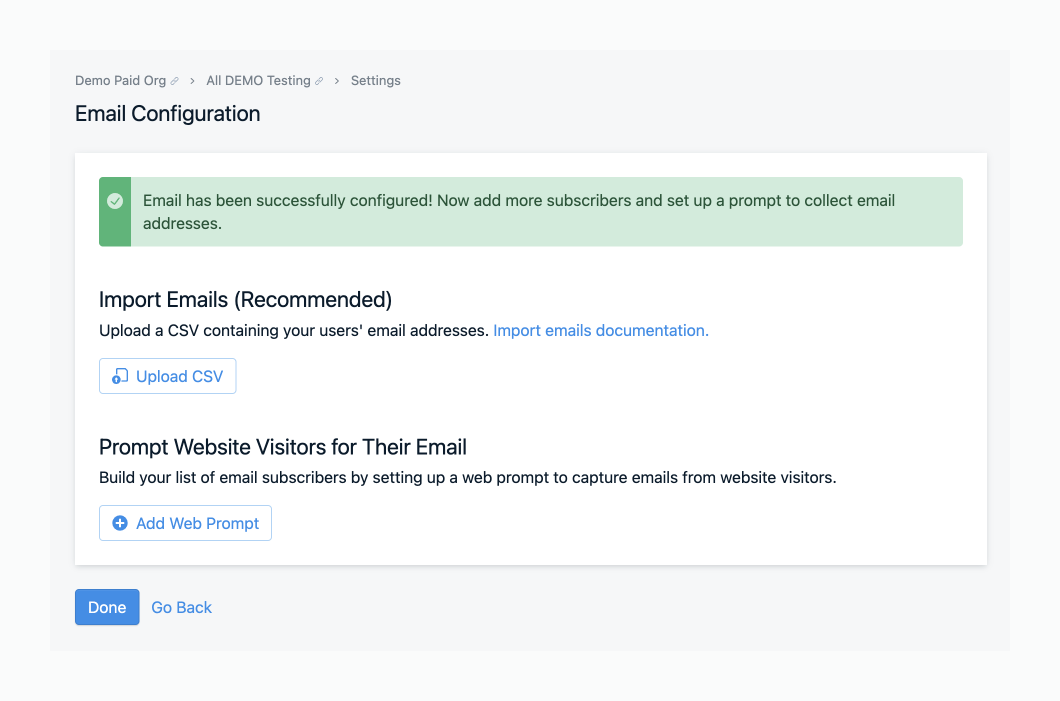
Done!
You can now start sending emails. Go to Sending Email Messages.
Step 6. Send Yourself a Test Email
In OneSignal > Messages > Email, select New Email.
Add a Subject and click Send Test Email. Input your email and press Send Test Message.

An email should arrive to your inbox shortly!
Troubleshooting
If running into issues, see our Email FAQ.
If stuck, contact support directly or email support@onesignal.com for help.
For faster assistance, please provide:
- Your OneSignal App Id
- Details, logs, and/or screenshots of the issue.
- Steps to reproduce
Step 7. Set Custom User Properties
OneSignal creates channel-level device records under a unique Id called the subscription_id. The subscription records are tied to a unique onesignal_id or OneSignal's internal User ID. A single user can have multiple subscription_id records based on how many devices, email addresses, and phone numbers they use to interact with your app.
If your app has its own login system to track users, call OneSignal.login() at any time to link all channels to a single user. For more details, see Aliases & External Ids.
All other event and user properties can be set using Data Tags. Setting this data is required for more complex segmentation and message personalization.
Step 8. Collect New Emails
Emails can be added into OneSignal using the following options outlined in our Import Email Addresses guide.
| Option | Description |
|---|---|
| Dashboard Upload | Upload a csv of emails and user data or manually add emails. |
| Server API | Programmatically add emails server side. |
SDK setEmail method | Add emails using our client side SDK. Recommended if using our SDKs for push or in-app messaging. |
| Email Web Prompt | A web prompt that allows user to include their own email address and phone number. |
Setup Complete!
Visit Email Tutorials for next steps.
Obtaining API Key
- Navigate to your MailChimp dashboard and click your avatar in the top-right corner to reveal the popup menu.
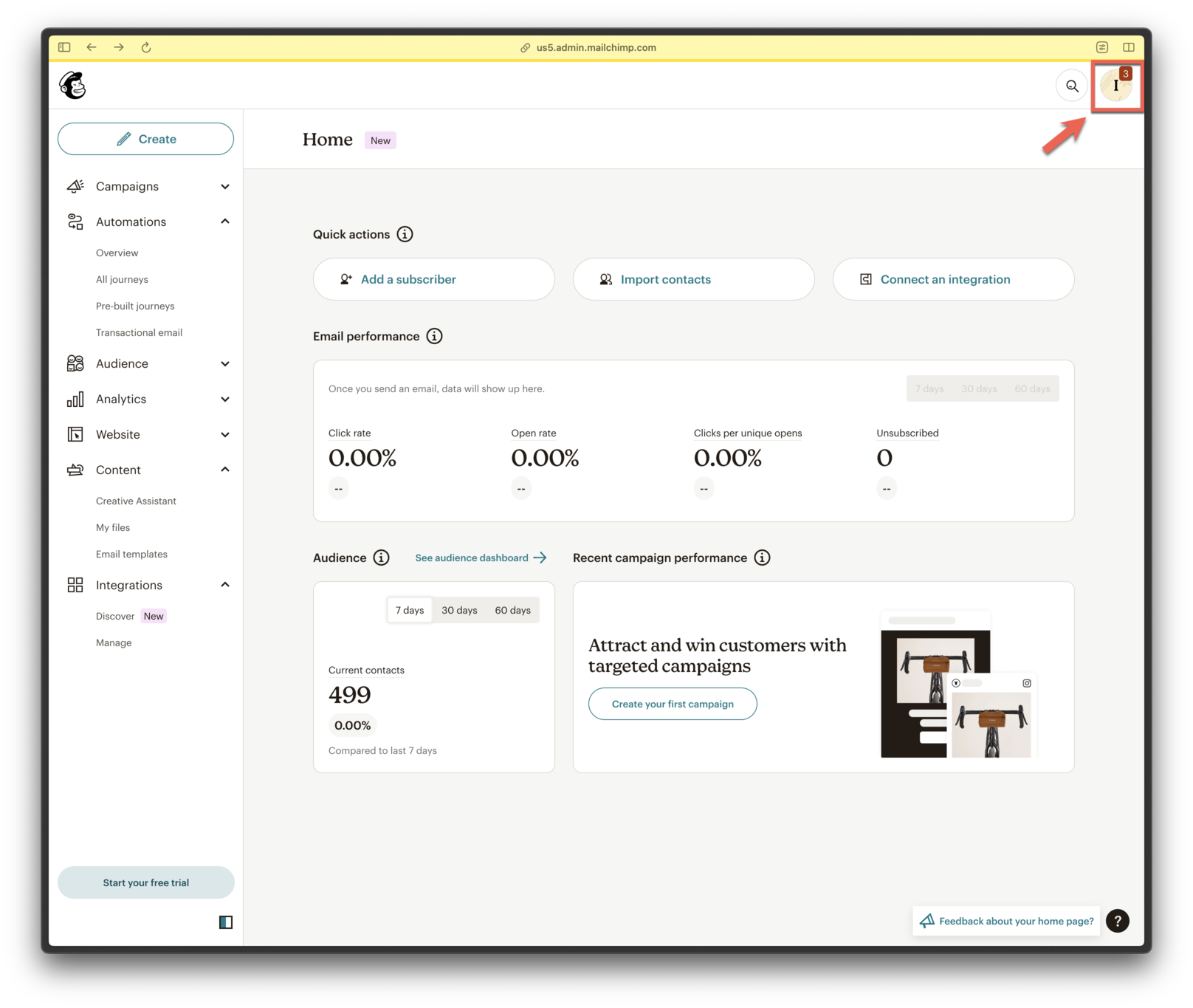
Clicking the user avatar
- Choose Account & Billing.
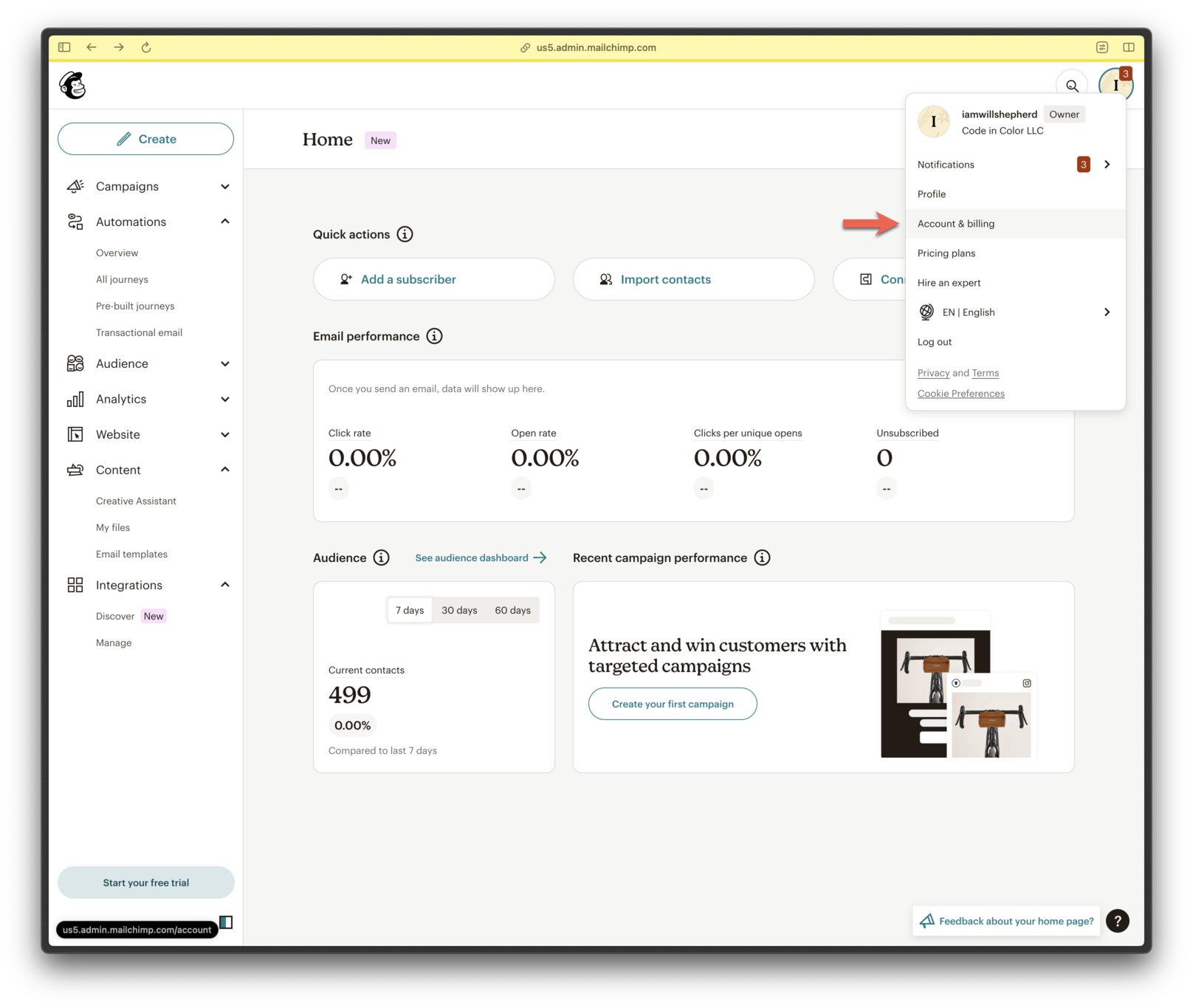
Selecting the Account & Billing link
- Click on Extras, then select API Keys.

Selecting Extras > API keys
- Click the Create A Key button located beneath your existing API keys.
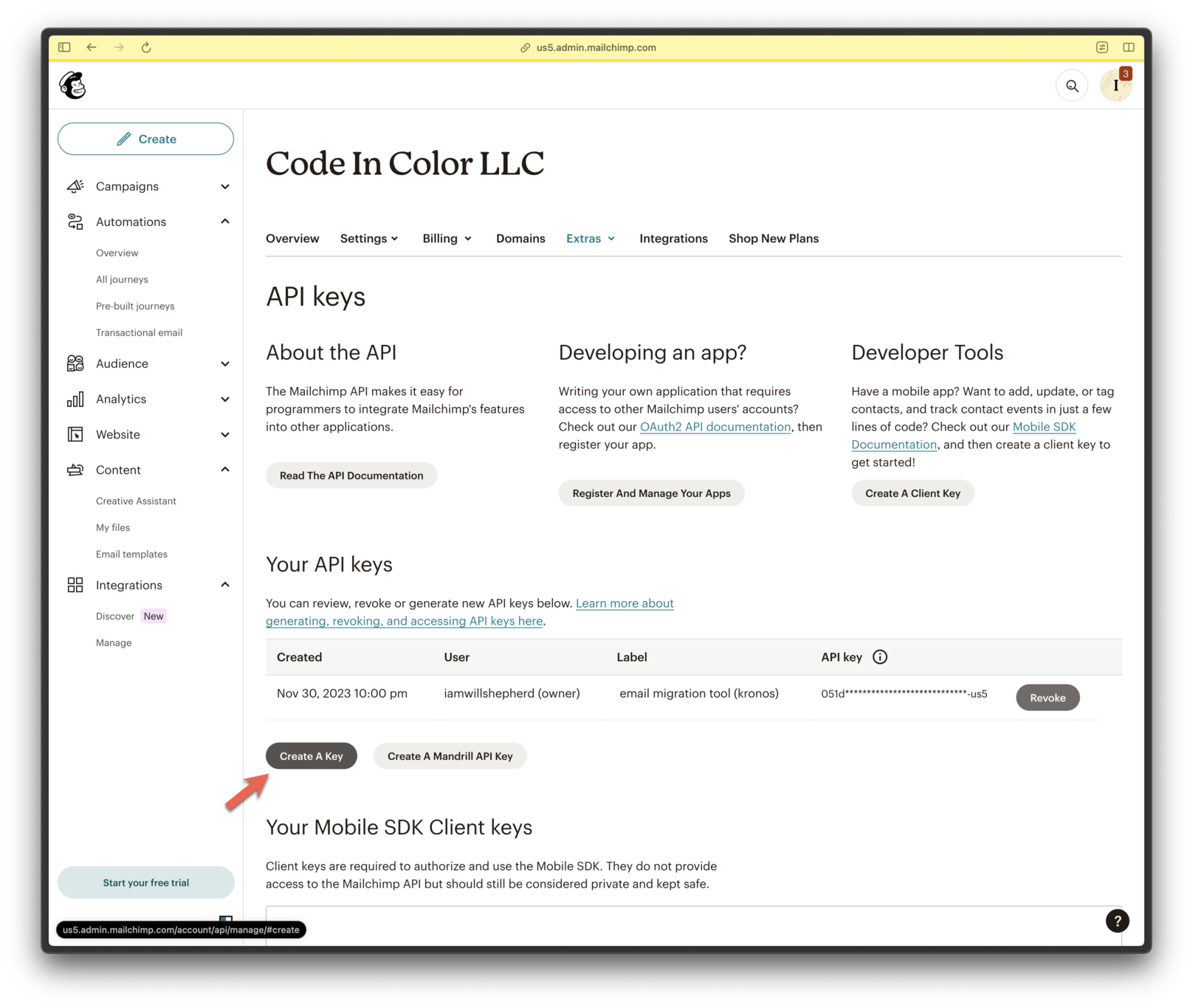
Clicking the Creating A Key button
- Provide a name for the key and click Generate Key.
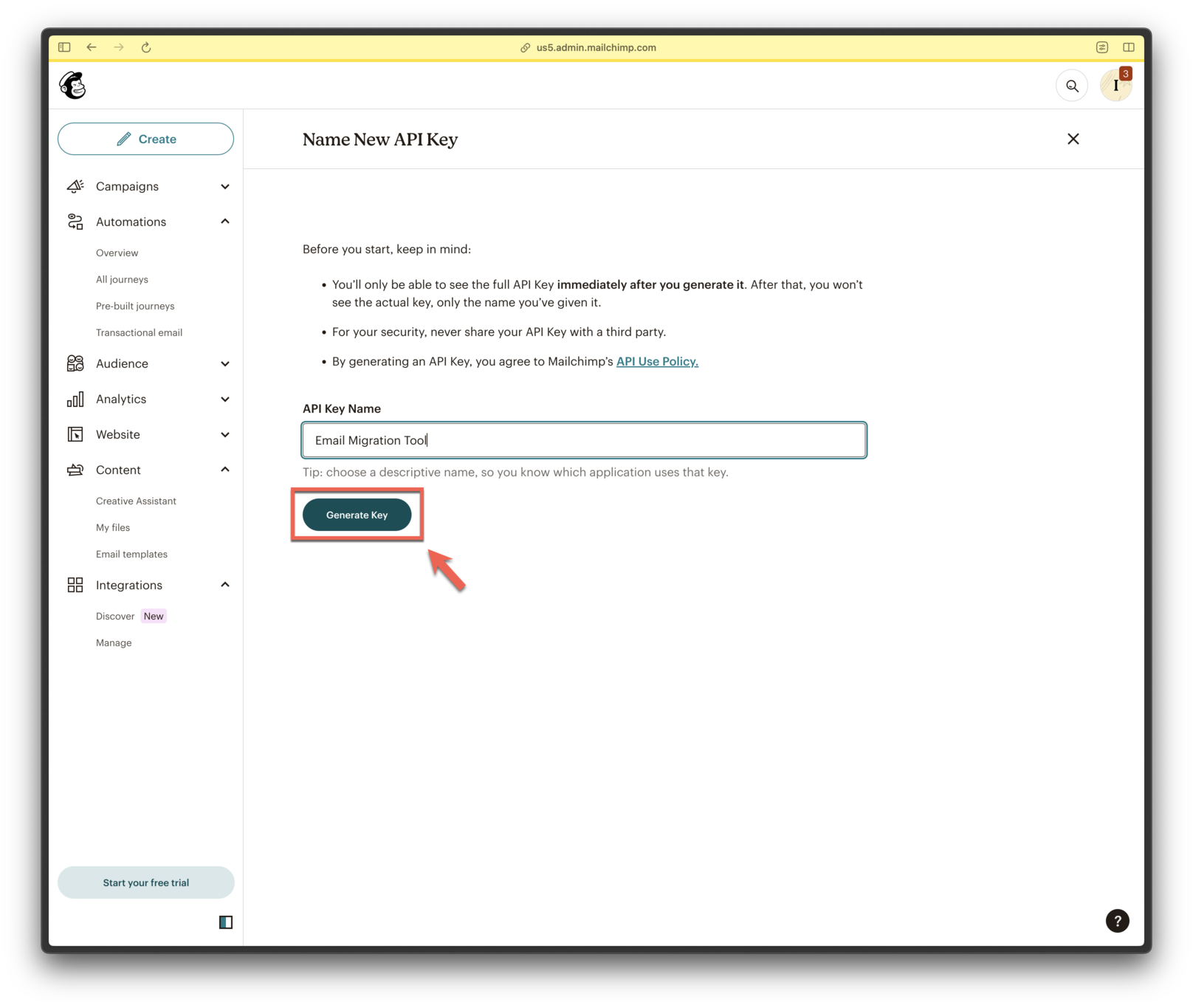
Naming the key and clicking the Generate Key button
- Copy your API key.
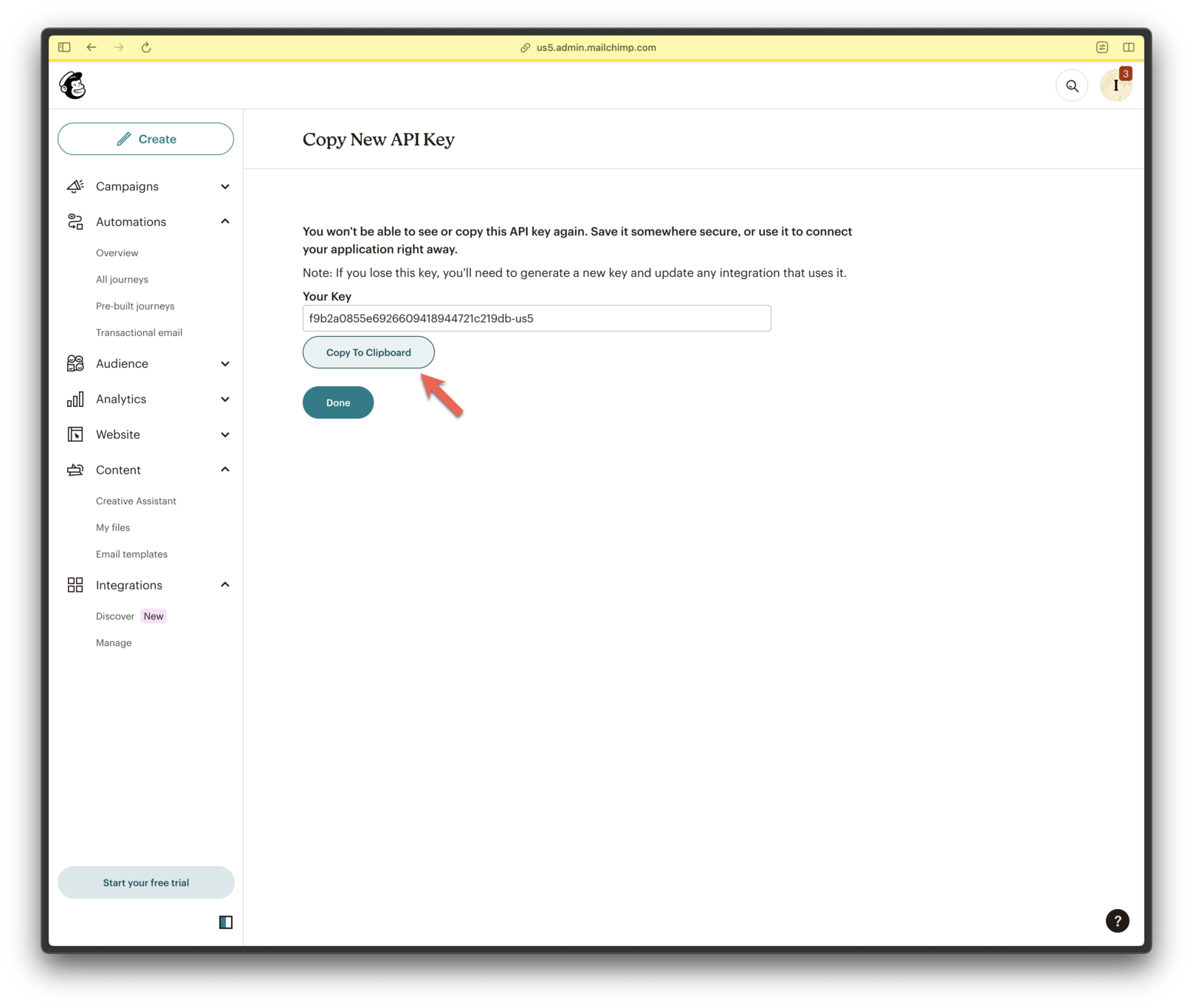
Copying key to clipboard
FAQ
How do I allowlist OneSignal's IPs?
See the requirements in our REST API Overview for details.
Updated 7 months ago
